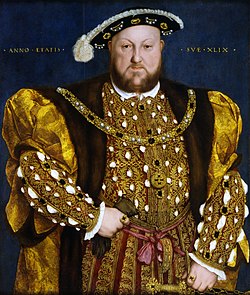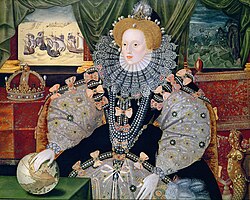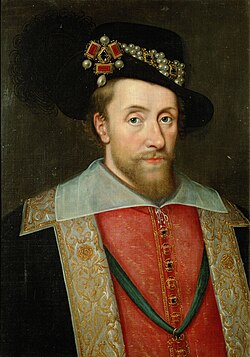Finding a way to turn a profit was the goal of the first explorers to the New World and remained a major goal throughout the period of colonization. The first of the get-rich-quick schemes was the establishment of a new route for the Far East spice trade.
King Henry VII of England underwrote an early voyage of discovery by John Cabot, an Italian sea captain, for just that reason. Henry VII was a canny businessman and knew if he could establish a safer and quicker way to trade in spices, the financial gain would be enormous. When Cabot returned, his report bragged of a new route to China and a relatively unpopulated land rich with natural resources. To support his claim, Cabot gave the king a huge cask of fish caught near a newly discovered island. Edward VII thanked Cabot for his island discovery with a bonus of an extra £10. (Some might think a different gift could have produced a greater bonus.) Many years later, the island was determined to be near Newfoundland, not China.
Cabot told King Henry VII of a vast, fertile land with bountiful raw goods ready for the taking. More voyages would surely result in many opportunities for trade and wealth. The incalculable potential of Cabot's discoveries fired the imaginations of rich and poor alike. Certainly, the King of England was not immune to New World fever when he was promised 20% of all profits made from new expeditions. Even a few more trips could provide funds to better the security and defense of England.
When Cabot failed to return from his next expedition in 1499, Henry VII commissioned William Weston for the first British led exploration of the "new found land."[1]

The king continued to invest in exploration as part of his overall financial strategy and was one of the few English kings to leave state finances in good order for his successor. His son, Henry VIII started his own reign with solid financial reserves in the treasury but soon spent it all during his first war with France. [2]
To be honest though, Henry VIII had a lot of expenses. There were the marital issues, of course. Adding in the cost of keeping a fashionable court and securely establishing the new Church of England as the official state religion could stretch anyone's budget.
Henry VIII did not sponsor major explorations himself. By now, most people understood the Americas were quite large continents and not a quicker route to the riches of the Far East spice trade. Instead of financing more expeditions to further explore the New World, Henry VIII decided to build coastal forts and improve his navy. This decision made England more easily defensible to foreign attacks and was critically important to later successful explorations. The amount of money going into Henry VIII's treasury never came close to the amount he spent so he ended up with huge debts that were passed along to his successors.[3]
Mary I came to the throne of England in 1553 with a bit of a grudge. Understandable really, since her immediate predecessors, Henry VIII (her father), Edward VI (her half-brother) and Lady Jane Grey (her cousin) had all tried to prevent her succession. And just as feared, she tried to abolish the Church of England to restore Catholicism as the state religion. This was an expensive endeavor as was financing the wars of her husband, Phillip II of Spain and Portugal.

Elizabeth I inherited the British throne in 1558 as well as a badly depleted treasury. The debt had now grown to £266,000 which would be at least £77,770,000 today.[4] Elizabeth I was an astute businesswoman and realized further explorations could bring in some badly needed profits even without a new spice route.
The expeditions to North and South America were successes in many ways--bringing tobacco, potatoes, cane sugar, chocolate and many other exotic treats back to Europe. Even these were not able to reduce Britain's debt, however.. Money had to be spent to defend England from foreign attack and to fund wars. As a result the next English monarch, James I, became responsible for an even greater debt--£420,000. By today's standards this would probably be a minimum of £91,000,000 although some authorities consider a better estimate to from ten to one hundred times this amount.

James I was faced with huge debts that he could not pay and banks that refused to loan money to him. Loans made by foreign banks to his predecessors had gone unpaid leaving the banks uninterested in risking more money. This left James I in a financial bind. He had huge debts and expenses with no way to take care of either. So when he was approached by wealthy investors proposing a royal charter to explore, settle and develop the land of the New World, he quickly agreed.
The Virginia Company of London was chartered in 1606 and charged with producing profitable, self-sustaining colonies so vast amounts of trading goods could be shipped back to Britain. [5] To the king the beauty of the plan was its safety since funds for the London Company came from its investors, not the treasury. Though not required to risk his own money, James fully expected to share in the profits.
Things did not go exactly as expected unfortunately. The initial settlement of Jamestown barely survived and other settlements failed dismally. The promise of dividends for all investors gradually became almost a lottery system with only a fortunate few receiving benefits.[5] By 1624, over seventy percent of all English colonists to Virginia had died by disease, famine or attack by native tribes, pirates or other countries. The Virginia Company failed to turn a profit and a displeased James I revoked the colony's charter and placed the colony under his direct control.
Not even the difficulties of the first settlements could stop progress once begun. Jamestown sent out settlers west to the falls of James River and south to the Nansemond. Other Virginia outposts were formed at Hampton and Forts Henry, Charles and Algernon. More and more settlements were formed over the years. Some succeeded and some failed, but overall the population continued to grow. British colonies were established in Massachusetts and Maryland while France and the Dutch started their own colonies of Quebec and New Amsterdam.
The people of the colonies and the colonies themselves were diverse from their beginnings and continued to be so. This diversity is expressed even today in the individualism of the different states of the United States of America.
Explore MoreExplore More
See alsoSee also
ReferencesReferences
- ↑ TRUEMAN, C. N. "Henry VII And Overseas Trade," historylearningsite.co.uk. The History Learning Site, 16 Apr 2015. Accessed 26 Jan 2024. Open Access.
- ↑ RICHARDSON, W. C. “Some Financial Expedients of Henry VIII.” The Economic History Review, vol. 7, no. 1, 1954, pp. 33–48. JSTOR.Org, doi:10.1111/j.1468- 0289.1954.tb01508.x. Open Access.
- ↑ KLINE, WAYNE M. “The English Crown’s Foreign Debt, 1544-1557.” University of Portland, 1992. Pdxscholar.Library.Pdx, Accessed 26 Jan. 2024. Open Access
- ↑ HODGES, KENNETH. "List of Price of Medieval Items," http://medieval.ucdavis.edu/120D/Money.html.
- ↑ WOLFE, BRENDAN. “Virginia Company of London."Encyclopedia Virginia, 7 Dec. 2020. Accessed 26 Jan. 2024.

